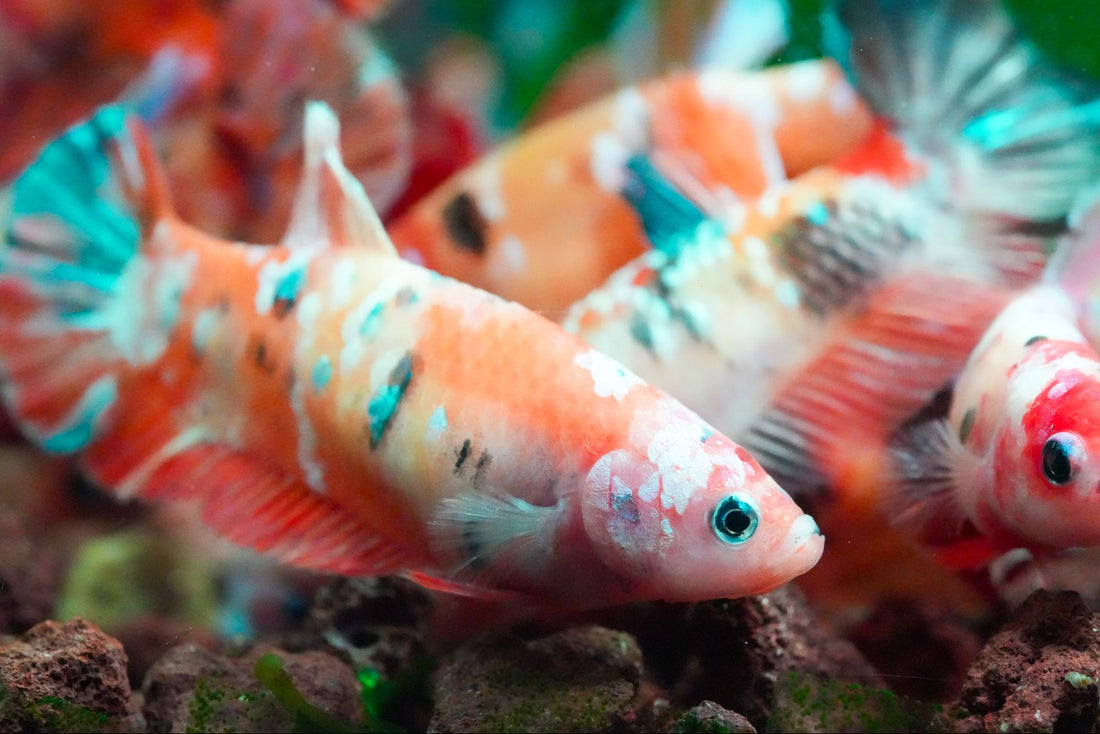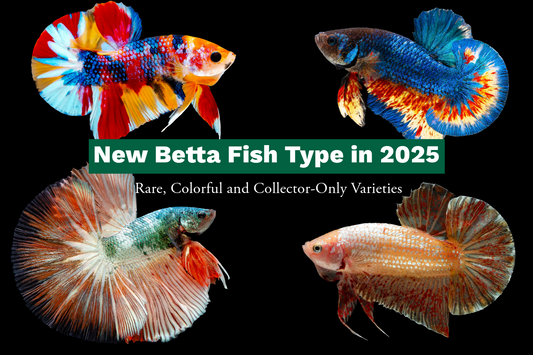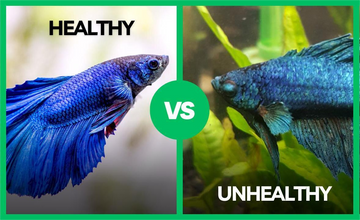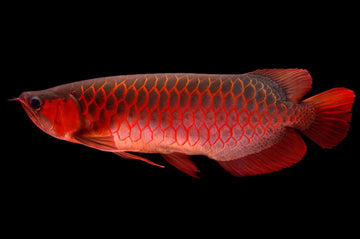Where Do Betta Fish Come From? Uncovering the Colorful Origins of the Betta Fish

If you've ever found yourself at a pet store, chances are you've seen rows of small tanks housing vibrant, long-finned fish.
Betta fish, also known as Siamese fighting fish, are loved for their brilliant colors and unique personalities.
But beyond their role as popular pets, these fish have a fascinating history and cultural significance, especially in Southeast Asia.
So, where do betta fish come from, and how did they go from wild river dwellers to fishbowl royalty?
The Native Home of Betta Fish
Betta fish originate from the warm, shallow waters of Southeast Asia.
The area includes countries like Thailand, Cambodia, Laos, Malaysia, and Vietnam, where wild bettas live in places that might seem unlikely at first glance.
Wild bettas can often be found in rice paddies, ponds, slow-moving streams, and even muddy roadside puddles. These waters are typically low in oxygen, something that has shaped bettas' behavior and anatomy over time.

Wild bettas thrive in the shallow waters of Southeast Asia, like these rice paddies.
Southeast Asia’s warm, tropical climate is perfect for bettas. They like water temperatures around 75 to 80 degrees Fahrenheit, which is just right for them to stay healthy and active.
Because they live in small, isolated bodies of water, bettas often have to deal with limited food and space. This has made them naturally competitive and a bit aggressive, especially the males who defend their territory fiercely.
One of the coolest things about bettas is their labyrinth organ.
This special feature lets them breathe air from the surface, not just oxygen from the water like most fish. This means they can survive in places where other fish might struggle because the water doesn’t have much oxygen. This ability is a big reason why bettas can thrive in all those tricky environments.

The betta’s labyrinth organ allows it to breathe from the surface.
Living in such tough conditions has also given bettas their strong survival instincts. They’ve had to become good at finding food and protecting their space from other fish. This is why even wild bettas can be pretty feisty.
These traits have carried over to the bettas we keep as pets today, making them not only beautiful but also resilient fish.
The Ecology of Betta Fish Origins
In the wild, betta fish play a big role in keeping their environment balanced. They love to snack on mosquito larvae and other small bugs, which helps keep insect numbers in check.
By controlling these little pests, bettas contribute to a healthier environment, especially in the shallow, plant-filled waters they call home. They interact with plants and other creatures, which keeps everything running smoothly in their habitat.

But it's not all smooth sailing for bettas in the wild. Their habitats are under pressure from things like urban expansion, pollution from farms, and cutting down forests. These activities mess up the water quality and destroy the places bettas call home. Without clean, stable environments, wild betta populations are at risk.
To tackle these issues, several conservation efforts are underway:
- Breeders raise bettas in captivity, reducing the need to catch them in the wild.
- Conservation groups restore habitats by replanting and cleaning up pollution.
- Regulations limit wild betta collection and trade to protect the species.
- Education efforts teach local communities the importance of preserving betta habitats.
More efforts are also being made to protect these habitats, such as restoring wetlands and reducing pollution. Supporting these initiatives is important to ensure that betta fish continue to thrive in their natural settings for years to come.
The Journey of Betta Fish to the Western World
The journey of the betta fish from Southeast Asia to Europe and America didn’t happen overnight. In the mid-1800s, the King of Thailand (then Siam) gifted a few bettas to a European visitor, which sparked the international spread of these fish.
Dr. Cantor and the Betta’s First Step to the West
Betta fish first caught the world’s eye in the late 1800s.
In 1892, Dr. Theodore Cantor, a British physician stationed in Siam (now Thailand), became fascinated with the aggressive and unique little fish he found there. He wasn’t just interested in their bright colors, he noticed how these fish had a remarkable ability to survive in low-oxygen water.
Dr. Cantor wrote a paper describing the bettas’ unusual behavior, their intense personalities, and even their willingness to fight with other fish. His observations got people in Europe curious, and soon enough, a few bettas made the long journey from Siam to Europe.
Bettas Reach the United States and Take on New Colors
From there, bettas found their way to the United States in the early 1900s.
Americans and Europeans alike were captivated by these little fighters. Breeders quickly saw the potential in bettas’ natural colors and fin shapes and began experimenting to bring out even more beauty.
Through selective breeding, they created the bold reds, deep blues, and bright purples we’re used to seeing today, in contrast to the earthier tones of their wild relatives. By the mid-20th century, breeders had also developed new fin types, like the iconic half-moon shape with its wide, sweeping tail and the edgy look of the crown-tail, which remains popular with aquarium enthusiasts.
In just a few decades, the betta fish went from being a local oddity in Southeast Asia to a favorite in fish tanks around the world.
Thanks to generations of careful breeding, the bettas we know today are colorful and flashy, yet still retain the bold spirit of their ancestors.
How They Differ: Wild vs. Domesticated Bettas

Wild bettas look very different from the vibrant, long-finned bettas found in pet stores.
Wild betta fish and the ones we see in pet stores might be the same species, but they have some big differences.
|
Feature |
Wild Bettas |
Domesticated Bettas |
|
Size |
Smaller, around 2-3 inches |
Larger, up to 3.5 inches |
|
Color |
Muted greens and browns |
Vibrant reds, blues, purples |
|
Fin Structure |
Shorter fins for maneuvering |
Long, flowing fins for display |
|
Aggression Level |
Moderate, short-lived fights |
Higher aggression, longer fights |
|
Habitat |
Rice paddies, ponds, slow streams |
Home aquariums, tanks |
|
Survival Traits |
Camouflage, adaptability |
Showy appearance, selective traits |
Wild bettas, often called Betta splendens, are smaller and tend to have a more natural look, with muted greens and browns that help them blend into their environment. These fish need camouflage to hide from predators in the wild, and they also have a more relaxed temperament. Fights between wild bettas usually only last a few minutes until one fish gives in and swims away.
Domesticated bettas, on the other hand, are bred specifically to look bright and beautiful. Breeders select them for eye-catching colors like blue, red, and purple, and for dramatic fin shapes like the “half-moon” or “crown-tail.” While these traits look amazing in an aquarium, they would not work well in the wild. Bright colors make them easy for predators to spot, and big fins make them slower and more vulnerable.
The Science Behind Betta Colors and Fins
One of the coolest things about betta fish is their bright colors and fancy fins. If you’ve seen the ones in pet stores, they’re nothing like the wild bettas. In the wild, bettas are usually a plain green-brown and have shorter fins, which helps them swim easily in shallow waters. But thanks to breeders, we now get to enjoy those stunning blues, reds, and purples.
So, how do bettas get these awesome colors? It all comes down to three layers in their skin:
- Iridescent Layer: This layer reflects light, creating those shiny, metallic colors you see.
- Black Layer: This layer helps define the patterns and outlines on the fish.
- Red/Yellow Layer: This is where the vibrant reds and yellows come from.
By mixing and matching these layers, breeders can create all sorts of colors and patterns. It’s like painting with nature’s own palette. For example, tweaking the iridescent layer can make a betta shimmer more, while adjusting the red/yellow layer can change the intensity of the color.

Breeders use natural layers in betta skin to create incredible colors and patterns.
When it comes to fins, breeders have gone wild (pun intended) with different shapes and sizes. Some bettas have long, flowing fins that trail behind them, while others have spiky fins that give them a more dramatic look. There are even varieties where the fins form perfect circles when spread out.
Future Prospects for Betta Fish
The future for betta fish looks good, with lots of research and breeding efforts focused on keeping them healthy and colorful. Advances in genetics and fish farming are helping breeders create even more vibrant and hardy bettas, which is great news for both the fish and the people who enjoy them.
People are also becoming more aware of how important it is to protect bettas’ natural habitats. This has led breeders and hobbyists to adopt more sustainable practices, like choosing tank-raised bettas over wild-caught ones.
By supporting conservation and using careful breeding techniques, the betta community is working to keep these beautiful fish around for a long time.
Check Out the Bettas at Tropicflow
Thinking about adding a beautiful betta to your aquarium? Tropicflow has a fantastic selection of healthy, colorful bettas with all the unique colors, fin shapes, and personalities you’re looking for.
Whether you’re into the striking halfmoons, classic veiltails, or rare color patterns, we’ve got something for every betta lover.
Caption: Discover stunning bettas at Tropicflow with unique colors and fin styles perfect for any tank.
Each betta we offer is carefully raised in the best conditions to make sure they’re healthy and ready for their new home. We’re all about responsible breeding and supporting conservation, so when you choose a betta from Tropicflow, you’re making a positive choice for these amazing fish.
Our team is always here to help with any questions, so you can feel good about caring for your new friend.
Take a look at our betta collection and find the perfect new addition for your tank!
No comments











0 comments